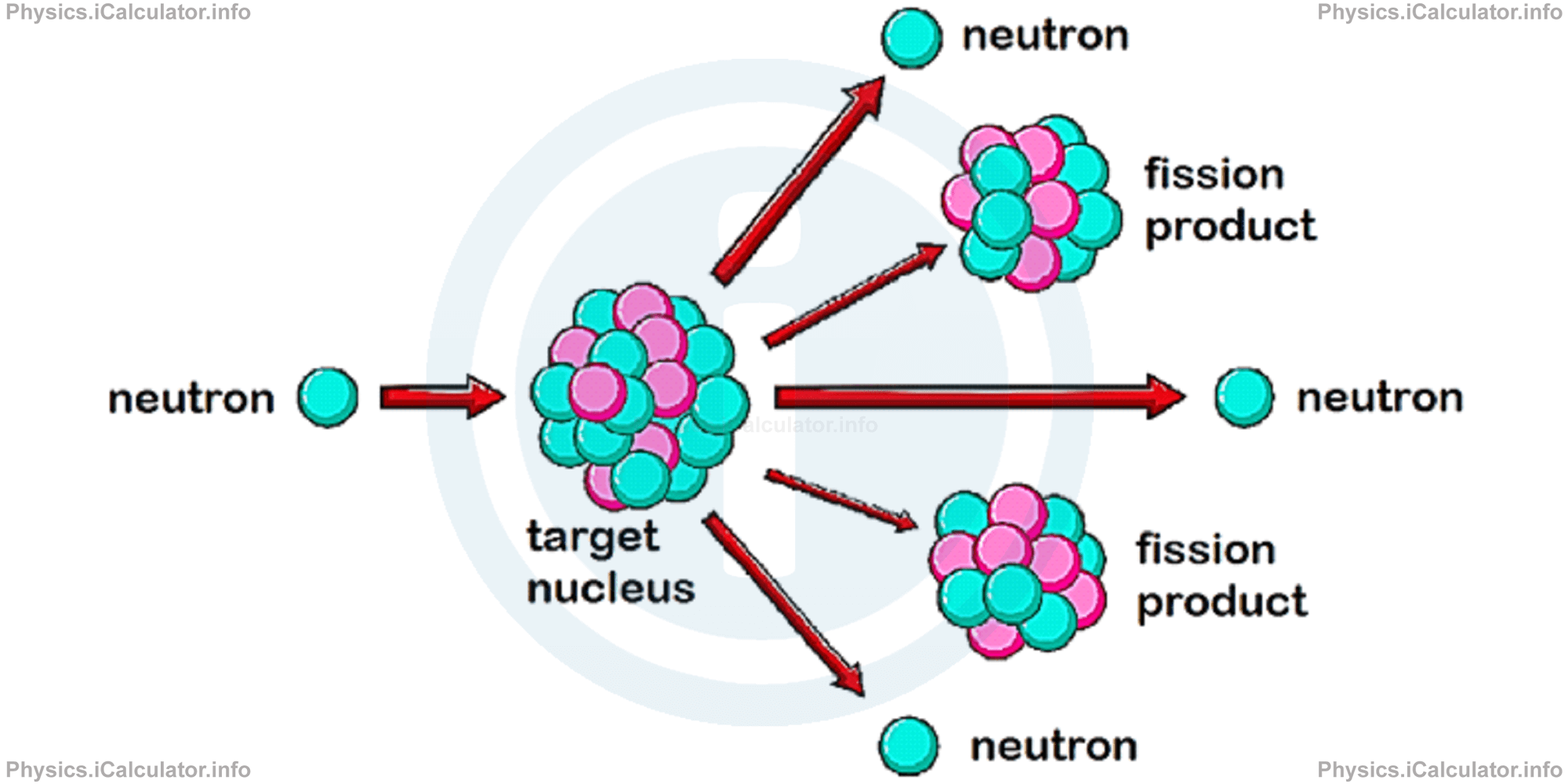Menu
Physics Lesson 20.4.2 - Nuclear Fission
Please provide a rating, it takes seconds and helps us to keep this resource free for all to use
Welcome to our Physics lesson on Nuclear Fission, this is the second lesson of our suite of physics lessons covering the topic of Nuclear Reactions, you can find links to the other lessons within this tutorial and access additional physics learning resources below this lesson.
Nuclear Fission
Nuclear fission represents a process in which a parent nucleus splits in two daughter nuclei when it "catches" a neutron. Look at here the necessity of presence of a neutron from outside the parent nucleus, without which it would be impossible to obtain a fission. This is where nuclear fission differs from radioactive decay (two original particles here produce two new particles, unlike nuclear decay, in which one original particle produces two new particles).
The figure below shows schematically how a nuclear fission process takes place.

The most typical nuclear reaction of fission is when a Uranium-235 nucleus splits into two daughter nuclei (Barium-141 and Krypton-92) after catching a slow (thermal) neutron - a process in which three new neutrons are released according the following scheme:
A large amount of energy is released in such reactions as there is a large difference between binding energy of parent nucleus (U-235) and the sum of binding energies of daughter nuclei (Ba-141 and Kr-92). The daughter nuclei obtained through nuclear fission have a high kinetic energy but since they are electrically (positively) charged, lose this kinetic energy in the form of heat by interacting with matter through ionization.
Other natural elements that may experience nuclear fission include Plutonium-239 (Pt-239), Uranium-233 (U-233) and Thorium-232 (Th-232).
How the Discovery of Nuclear Fission did Occur?
The discovery of nuclear fission was a pure casual process. All this started with the discovery of neutron by James Chadwick in 1932. A few years later, Enrico Fermi discovered the fact that various elements might become radioactive by hitting them with neutrons. This discovery puzzled two German scientists, Otto Hahn and Fritz Strassmann, who attempted to obtain heavier nuclei than uranium by bombarding uranium nuclei with neutrons. Thus, instead of heavier nuclei, they obtained some unidentified particles, which after a careful observation in laboratory, were identified as Barium-141 nuclei (one of products). The two scientists were so much surprised by such a discovery that they hesitated to publish their results for a long time. However, this draw the attention of Lise Meitner - an Austrian scientist who had previously worked with Hahn. Thus, after emigrating in Sweden, she deepened further the study of this process and as a result, she realized that Barium-141 and the other products obtained through this process derive from the splitting (fission) of Uranium-235 nuclei. Meitner and her nephew Otto Frisch continued their experiments and discovered that if a uranium nucleus is hit by a neutron, a high amount of energy is released - a process that also produces at least two free neutrons for every single neutron absorbed by the parent nucleus, in an avalanche-like process. Such a discovery was the first step towards the construction of nuclear reactors - a very important source of energy in the modern world.
You have reached the end of Physics lesson 20.4.2 Nuclear Fission. There are 11 lessons in this physics tutorial covering Nuclear Reactions, you can access all the lessons from this tutorial below.
More Nuclear Reactions Lessons and Learning Resources
Whats next?
Enjoy the "Nuclear Fission" physics lesson? People who liked the "Nuclear Reactions lesson found the following resources useful:
- Fission Feedback. Helps other - Leave a rating for this fission (see below)
- Nuclear Physics Physics tutorial: Nuclear Reactions. Read the Nuclear Reactions physics tutorial and build your physics knowledge of Nuclear Physics
- Nuclear Physics Revision Notes: Nuclear Reactions. Print the notes so you can revise the key points covered in the physics tutorial for Nuclear Reactions
- Nuclear Physics Practice Questions: Nuclear Reactions. Test and improve your knowledge of Nuclear Reactions with example questins and answers
- Check your calculations for Nuclear Physics questions with our excellent Nuclear Physics calculators which contain full equations and calculations clearly displayed line by line. See the Nuclear Physics Calculators by iCalculator™ below.
- Continuing learning nuclear physics - read our next physics tutorial: Atomic Nucleus and Its Structural Properties
Help others Learning Physics just like you
Please provide a rating, it takes seconds and helps us to keep this resource free for all to use
We hope you found this Physics lesson "Nuclear Reactions" useful. If you did it would be great if you could spare the time to rate this physics lesson (simply click on the number of stars that match your assessment of this physics learning aide) and/or share on social media, this helps us identify popular tutorials and calculators and expand our free learning resources to support our users around the world have free access to expand their knowledge of physics and other disciplines.